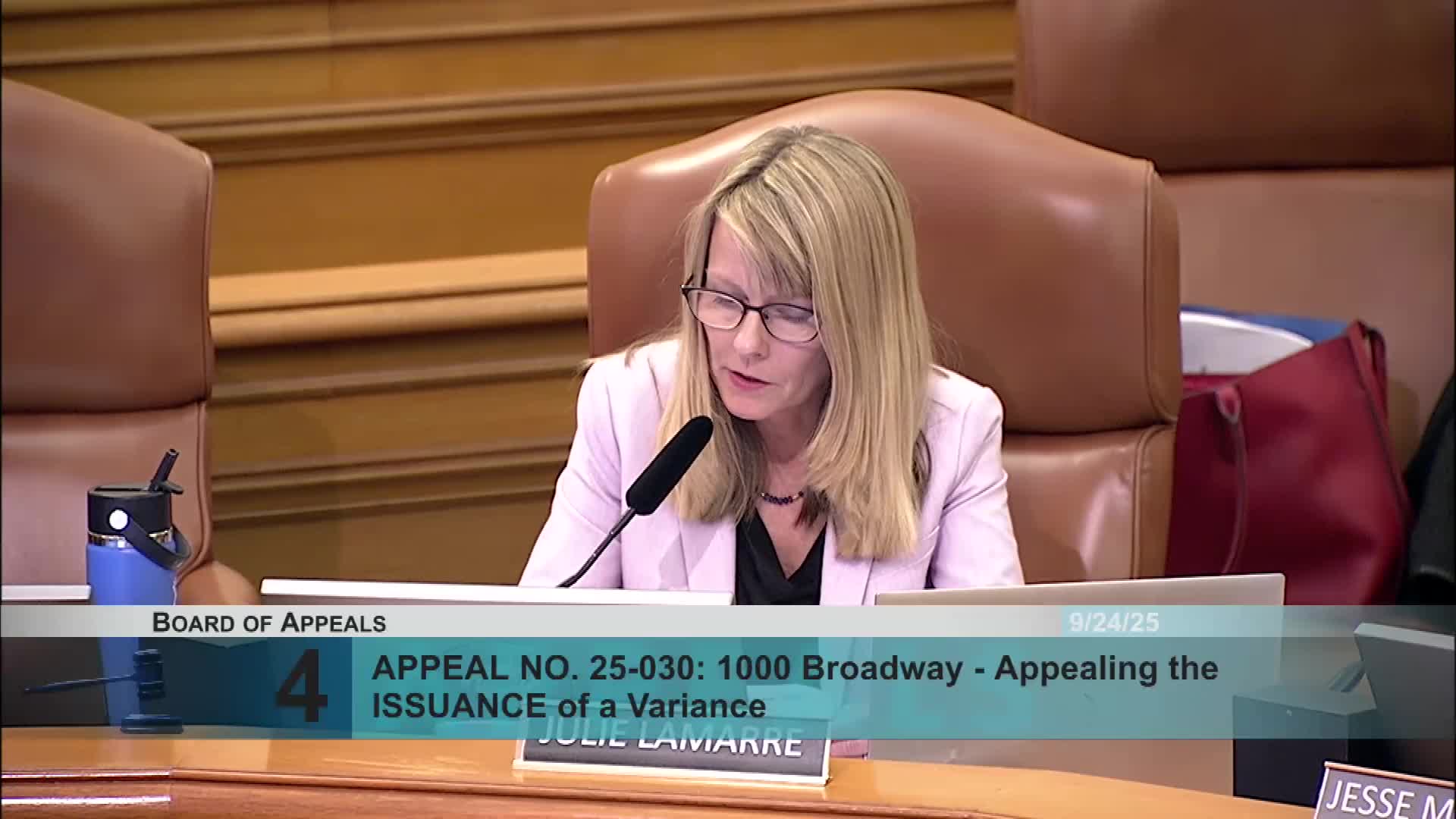Neighborhood Appeals Zoning Variance for Historic Lot Development on Broadway
September 24, 2025 | San Francisco City, San Francisco County, California
This article was created by AI summarizing key points discussed. AI makes mistakes, so for full details and context, please refer to the video of the full meeting. Please report any errors so we can fix them. Report an error »

In a recent San Francisco government meeting, the proposal to construct three buildings on a vacant quarter lot at 1000 Broadway sparked significant debate among city officials, developers, and local residents. The project aims to create five dwelling units, with buildings ranging from four to six stories, and includes a two-level parking garage. However, the proposal has faced opposition due to concerns about its impact on the historic character of the neighborhood.
The appellant, a local resident, expressed strong objections to the elimination of the required rear yard setback, arguing that the proposed eight-level condo tower would disrupt the historic integrity of the area. He emphasized that the development would introduce a density seven times greater than that of neighboring properties, which typically feature single-family homes. The appellant contended that the project undermines the preservation goals of the historic district, which is known for its significant green spaces and architectural heritage.
In response, the developer's representative highlighted the unique challenges posed by the site, including a steep slope and the presence of a protected coastal redwood tree. They argued that these factors justify the need for variances from the planning code, allowing for a more flexible approach to development. The project aims to balance the need for housing with the preservation of the historic retaining wall and surrounding landscape.
City officials, including the zoning administrator, supported the project, noting that it aligns with the city's goals for increased housing density while maintaining open space. They pointed out that the planning code allows for variances in cases where exceptional circumstances exist, such as the unique topography of the site.
The meeting underscored the ongoing tension between development and preservation in San Francisco, particularly in historic districts. As the city grapples with a housing crisis, the challenge remains to find a balance that respects the character of neighborhoods while addressing the urgent need for more housing. The board is expected to make a decision on the appeal in the coming weeks, which could set a precedent for future developments in similar historic areas.
The appellant, a local resident, expressed strong objections to the elimination of the required rear yard setback, arguing that the proposed eight-level condo tower would disrupt the historic integrity of the area. He emphasized that the development would introduce a density seven times greater than that of neighboring properties, which typically feature single-family homes. The appellant contended that the project undermines the preservation goals of the historic district, which is known for its significant green spaces and architectural heritage.
In response, the developer's representative highlighted the unique challenges posed by the site, including a steep slope and the presence of a protected coastal redwood tree. They argued that these factors justify the need for variances from the planning code, allowing for a more flexible approach to development. The project aims to balance the need for housing with the preservation of the historic retaining wall and surrounding landscape.
City officials, including the zoning administrator, supported the project, noting that it aligns with the city's goals for increased housing density while maintaining open space. They pointed out that the planning code allows for variances in cases where exceptional circumstances exist, such as the unique topography of the site.
The meeting underscored the ongoing tension between development and preservation in San Francisco, particularly in historic districts. As the city grapples with a housing crisis, the challenge remains to find a balance that respects the character of neighborhoods while addressing the urgent need for more housing. The board is expected to make a decision on the appeal in the coming weeks, which could set a precedent for future developments in similar historic areas.
View full meeting
This article is based on a recent meeting—watch the full video and explore the complete transcript for deeper insights into the discussion.
View full meeting
